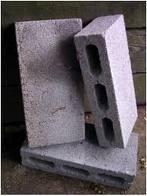 There have been a number of advances in new concrete technology in the past ten years. There have been advancements made in almost all areas of concrete production including materials, recycling, mixture proportioning, durability, and environmental quality. However, many of these innovations have not been adopted by the concrete industry or concrete users / buyers. There is always some resistance to change and it is usually based on cost considerations and lack of familiarity with the new technology.
There have been a number of advances in new concrete technology in the past ten years. There have been advancements made in almost all areas of concrete production including materials, recycling, mixture proportioning, durability, and environmental quality. However, many of these innovations have not been adopted by the concrete industry or concrete users / buyers. There is always some resistance to change and it is usually based on cost considerations and lack of familiarity with the new technology.
The latest new concrete technology is beginning to gain acceptance in the industry. Some of the more interesting new concretes are called high performance concrete (HPC), ultra high performance concrete, and geopolymer concrete. They have significant advantages and little or no disadvantages when compared to standard concrete in use today.
High performance concrete usually contains recycled materials and thereby reduces the need to dispose of these materials. Some of these materials include fly ash (waste by-product from coal burning), ground granulated blast furnace slag, and silica fume. But perhaps the biggest benefit of using some of these other materials is the reduction in the need to use cement, also commonly referred to as Portland cement. The reduction in the production and use of cement will have many beneficial effects. These benefits will include a reduction in the creation of carbon dioxide emissions and a reduction in energy consumption, both of which will improve the global warming situation. It is estimated that the production of cement worldwide contributes five to eight percent of global carbon dioxide emissions. In addition, the use of fly ash and furnace slag is usually cheaper than cement and they have properties that improve the quality of the final concrete.
Today’s new concrete technology has produced new types of concrete that have live spans measured in the hundreds of years rather than decades. The use of fly ash and other by-product materials will save many hundreds of thousands of acres of land that would have been used for disposal purposes. Fly ash and other by-products from burning coal, are some of the most abundant industrial waste by-products on the planet. The elimination of burial sites for these waste by-products will translate into less risk of contamination of surface and underground water supplies. When compared to standard concrete the new concretes have better corrosion resistance, equal or higher compressive and tensile strengths, higher fire resistance, and rapid curing and strength gain. In addition, the production and life cycle of these new concretes will reduce greenhouse gas emissions by as much as 90%.
BSI is a new concrete technology that has a much higher tensile and flexural (bending) strength than standard concrete. It is a fiber-reinforced concrete that is combined with premixed dry components. It is much denser than standard concrete and structures built with it will need far less new concrete, perhaps as much as 80% less. The high density gives BSI concrete other properties such as extremely high resistance to corrosion from chemicals. The higher strength of BSI eliminates the need for placement of steel rebar in structural designs. BSI, or some variation with metallic fibers and/or superplasticizers, will be used to build some structural elements less than an inch thick. Overall, structures built with BSI will have much greater life spans and will require far less maintenance.
Ductal is another new concrete technology that is denser than BSI. Ductal uses steel or organic fibers to create a concrete that is stronger than BSI. Interestingly, the ancient Romans used horse hair in their concrete to improve its strength. Ductal is being tested for use in earthquake resistant structures, bridges, tunnels, and nuclear containment structures. Although it is more expensive than traditional concrete there are a number of cost savings that will make it price competitive. Among these cost savings are no steel rebar is needed, less material is needed with less related labor and equipment costs, and structures are thinner with less weight and require smaller foundations. In addition, both BSI and Ductal have low maintenance costs because of their very low porosity and are very resistant to penetration by water or chemicals. They are both resistant to salt water which is very corrosive and damaging to today’s bridges and roadways.
Source: https://blog.royaltyfree-stockphoto.com/?p=2329
Source Site: – https://www.aggregateresearch.com/news/advances-in-new-concrete-technology/

